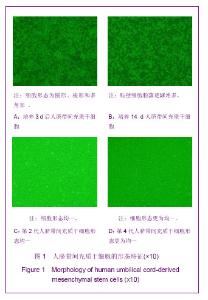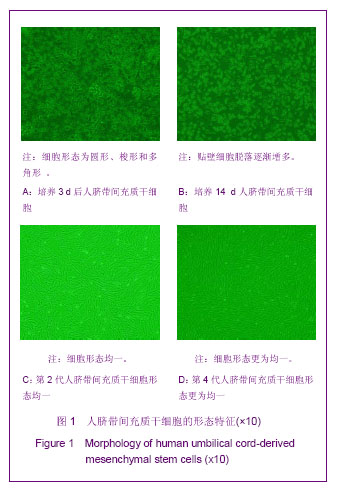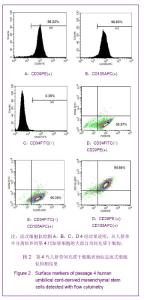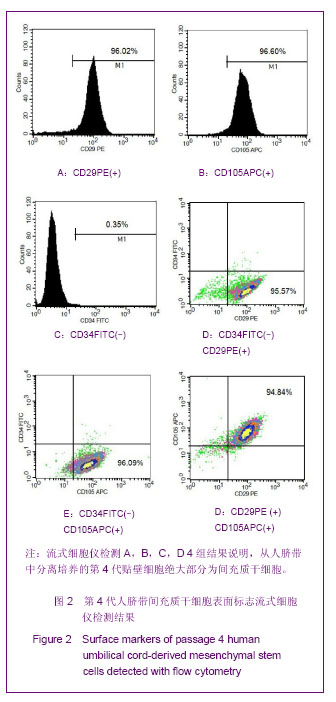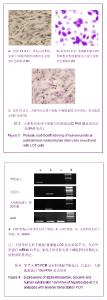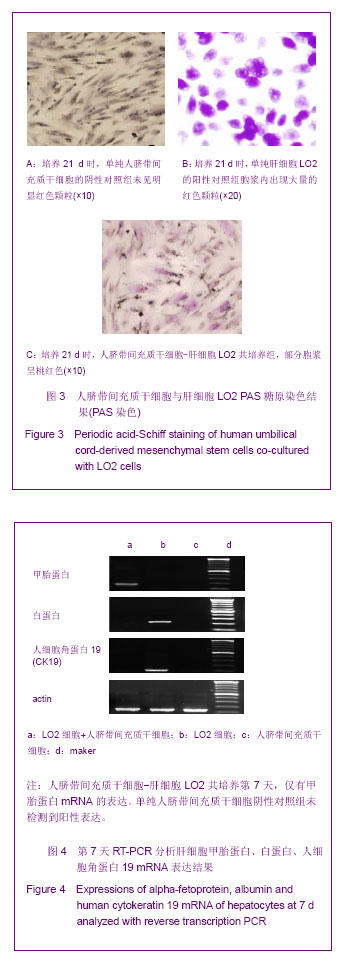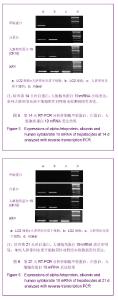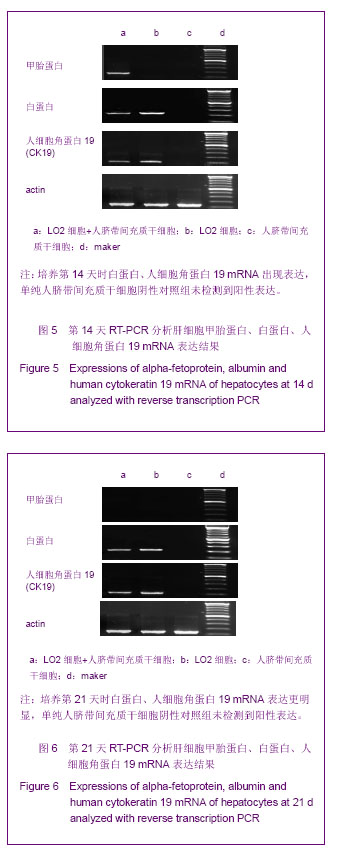| [1] Choi KM, Seo YK, Yoon HH, et al. Effects of mechanical stimulation on the proliferation of bone marrow-derived human mesenchymal stem cells. Biotechnol Bioprocess Eng.2007;12: 601-609.[2] Vassalli G, Moccetti T. Cardiac repair with allogeneic mesenchymal stem cells after myocardial infarction. Swiss Med Wkly. 2011;23;141:w13209.[3] Kim S, Kim HS, Lee E,et al. In vivo hepatic differentiation potential of human cord blood-derived mesenchymal stem cells. Int J Mol Med. 2011;27(5):701-706.[4] Li CD, Zhang WY, Li HL, et al.Mesenchymal stem cells derived from human placenta suppress allogeneic umbilical cord blood lymphocyte proliferation.Cell Research.2005; 15(7):539-547. [5] Liu H, Kemeny DM, Heng BC, et al.The Immunogenicity and Immunomodulatory Function of Osteogenic Cells Differentiated from Mesenchymal Stem Cells. J Immunol. 2006;176: 2864-2871.[6] Pulavendran S, Rose C, Mandal AB. Hepatocyte growth factor incorporated chitosan nanoparticles augment the differentiation of stem cell into hepatocytes for the recovery of liver cirrhosis in mice. J Nanobiotechnology. 2011;28;9:15.[7] Hong SH, Gang EJ, Jeong JA, et al. In vitro differentiation of human umbilical cord blood-derived mesenchymal stem cells into hepatocyte-like cells. Biochem Biophys Res Commun. 2005;20;330(4):1153-1161.[8] Yoona HH, Junga BY, Seoa YK, et al. In vitro hepatic differentiation of umbilical cord-derived mesenchymal stem cell. Biochem Eng Sci. 2010;45:1857-1864.[9] Kollet O, Shivtiel S, Chen YQ, et al.HGF,SDF-1,and MMP-9 are involved in stress-induced human CD34+ stem cell recruitment to the liver. J Clin Invest. 2003;15; 112(2): 160-169.[10] Yamazaki S, Miki K, Hasegawa K, et al. Sera from liver failure patients and a demethylating agent stimulate transdifferentiation of murine bone marrow cells into hepatocytes in coculture with nonparenchymal liver cells. J Hepatol. 2003;39(1):17-23.[11] Qihao Z, Xigu C, Guanghui C, et al. Spheroid Formation Differentiation into Hepatocyte-Like Cells of Rat Mesenchymal Stem Cell Induced by Co-Culture with Liver Cells. Dna Cell Biology. 2007;26:497-503.[12] Cecchi F, Rabe DC, Bottaro DP.Targeting the HGF/Met signalling pathway in cancer. Eur J Cancer.2010;46: 1260-1270.[13] 王荥,徐惠成. Notch信号通路对干细胞分化的影响[J].中国细胞生物学学报,2011, 33(4): 439-443. |
